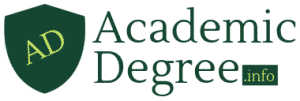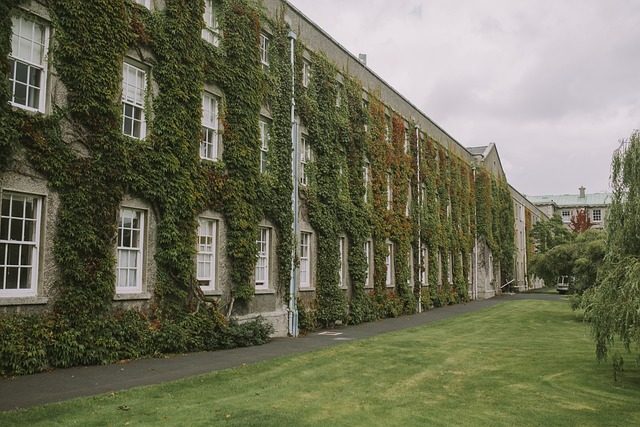The Southern Association of Colleges and Schools (SACS) plays a crucial role in maintaining educational standards across various institutions. This organization, established in 1895, focuses on ensuring that colleges and universities provide a high level of education, equipping students with essential knowledge and skills.
Understanding the framework and operations of SACS is vital for students, educators, and stakeholders alike, as accreditation significantly impacts institutional credibility and student outcomes.
Table of Contents
What is the Southern Association of Colleges and Schools?
The Southern Association of Colleges and Schools is a regional accrediting body that oversees educational institutions in the Southern United States and beyond. SACS is committed to maintaining educational quality by ensuring institutions meet specific standards and guidelines.
With its expansive reach, SACS oversees approximately 750 degree-granting institutions offering programs that range from associate degrees to doctoral levels. This breadth of coverage underscores the importance of SACS in the realm of higher education.
The organization’s mission emphasizes enhancing institutional effectiveness and compliance with accreditation standards. By providing guidelines and resources, SACS supports schools in their pursuit of excellence.
How does the Southern Association of Colleges and Schools accreditation process work?
The Southern Association of Colleges and Schools Commission on Colleges (SACSCOC) employs a rigorous accreditation process that involves several key steps. Institutions seeking accreditation must demonstrate that they meet SACSCOC standards, which cover numerous aspects of educational quality and institutional performance.
Initially, institutions must prepare an extensive self-study report, which evaluates their adherence to the SACSCOC accreditation standards. This report is then reviewed by a committee of peers, ensuring an objective assessment of the institution’s compliance.
- Self-Study: Institutions conduct a thorough evaluation of their operations and standards.
- Peer Review: A team of evaluators reviews the self-study report and conducts site visits.
- Decision: Following the review, SACSCOC decides whether to grant accreditation.
Once accredited, institutions must continue to demonstrate compliance with SACSCOC standards. This ongoing process ensures that educational quality is maintained over time.
What schools are accredited by the Southern Association of Colleges and Schools?
Numerous institutions across the Southern United States hold SACSCOC accreditation. This includes a diverse array of colleges and universities, from large research institutions to small community colleges.
Some notable accredited institutions include:
- University of North Carolina at Chapel Hill
- University of Florida
- Emory University
- Duke University
These schools demonstrate a commitment to educational excellence and adhere to the rigorous standards set by SACS. Accreditation signifies that these institutions have undergone a comprehensive evaluation process and are dedicated to providing high-quality education.
Is the Southern Association of Colleges and Schools Commission on Colleges legit?
Yes, the Southern Association of Colleges and Schools Commission on Colleges (SACSCOC) is a legitimate and recognized accrediting body. It is recognized by the U.S. Department of Education and the Council for Higher Education Accreditation, which adds to its credibility.
SACSCOC maintains high standards, and its accreditation is considered essential for institutions aiming to provide quality education. This recognition ensures that the programs offered by accredited institutions meet specific educational quality benchmarks.
Moreover, the legitimacy of SACSCOC is reinforced by its adherence to the Council on Accreditation and School Improvement guidelines, which establishes a solid foundation for evaluating institutional effectiveness.
What are the benefits of Southern Association of Colleges and Schools accreditation?
Obtaining accreditation from the Southern Association of Colleges and Schools offers numerous advantages for educational institutions. Some of these benefits include:
- Enhanced credibility and reputation among students and employers.
- Access to federal financial aid for students.
- Improved institutional effectiveness through adherence to quality standards.
- Opportunities for collaboration with other accredited institutions.
Accreditation also serves as a benchmark for continuous improvement, encouraging institutions to regularly assess and enhance their programs. This ongoing process benefits not only the institutions but also the students they serve.
What challenges do institutions face with Southern Association of Colleges and Schools accreditation?
While the accreditation process through the Southern Association of Colleges and Schools offers many benefits, institutions may encounter several challenges. One significant challenge is the comprehensive nature of the self-study process, which requires considerable time and resources.
Additionally, maintaining compliance with SACSCOC accreditation standards can be an ongoing struggle, as institutions must continually evaluate and improve their programs. This process may be particularly challenging for smaller colleges with limited resources.
Lastly, institutions may face difficulties in understanding and implementing the specific requirements set forth by SACSCOC, leading to potential gaps in compliance and risking their accredited status.
Related Questions About the Southern Association of Colleges and Schools
Is SACS a good accreditation?
The SACSCOC accreditation is highly regarded within the field of higher education. Institutions accredited by SACSCOC are recognized as meeting rigorous educational quality standards, providing assurance to students and stakeholders.
Additionally, SACSCOC’s status as a federally recognized accrediting body reinforces its credibility. This accreditation helps institutions secure federal funding, enhancing their ability to offer quality educational programs.
What does it mean to be accredited by the SACS?
Being accredited by the Southern Association of Colleges and Schools signifies that an institution has met established quality standards in several areas, including governance, resources, and educational outcomes. This accreditation assures students and stakeholders that the institution is committed to delivering high-quality education.
Furthermore, it opens doors for institutions to receive federal financial aid, grants, and partnerships with other accredited schools. Accreditation is crucial for maintaining legitimacy and enhancing institutional reputation.
Is SAC the same as SACSCOC?
SAC and SACSCOC refer to the same organization, with SACSCOC being the official name of the Southern Association of Colleges and Schools Commission on Colleges. The terms are often used interchangeably, but SACSCOC is the complete title that reflects its role as an accrediting body for colleges and universities.
Understanding this distinction is essential for institutions and individuals navigating the higher education landscape, as it clarifies the organization’s specific focus on college-level accreditation.
How long is SACSCOC accreditation good for?
Once an institution receives SACSCOC accreditation, the accreditation is typically valid for ten years. However, institutions must undergo a reaffirmation process midway through this period to demonstrate ongoing compliance with SACSCOC standards.
This reaffirmation process ensures that institutions continuously meet quality standards and remain committed to providing excellent educational experiences. Failure to comply can result in the loss of accreditation, highlighting the importance of maintaining adherence to established guidelines.










